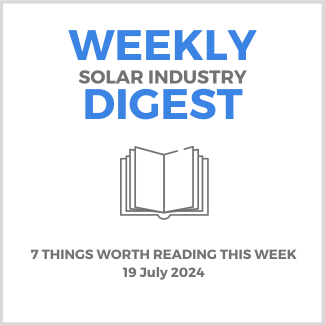10 Northeastern states have agreed to collaborate on improved interregional transmission development. They signed a memorandum of understanding that set a framework for planning, including specifying that each state is responsible for its own costs. They stretch from Maine to Maryland and will look to increase the flow of electricity between three different planning regions in the NE. They are agreeing to share technical data, solicitation guidance, regulatory updates, strategic plans, project status reports, research findings and more.
U.S.-made lithium-ion battery energy storage systems could compete on price with Chinese-made systems by 2026 given that more U.S. production capacity is coming online. The IRA’s 45X tax credit will help close the current pricing gap of more than 20% between U.S. and Chinese batteries.
Aurora Solar acquired Lyra, a provider of instant plan set packages. Lyra’s permit packaging software is designed to help solar pros automate, create and export permit-ready design plans. The companies are seeking to deliver on Aurora’s full project management suite combined with a smoother, expedited permit-ready proposal generation.
Generac launched an update Level 2 electric vehicle charger for resi applications. The charger comes in two formats, the 40 A plus and 48 A plus models, which offer roughly 25 to 30 miles of charge added per hour. The 40 A edition is NEMA 14-50 rated for a rapid plug-in installation. The 40 A model provides up to 9.6 kW of power output, while the 48 A edition offers up to 11.5 kW.
Fronius has released its next gen string inverter GEN24 in the United States. It offers future-proof flexibility, a SuperFlex design, and power classes ranging from 3.8 to 10 kW. It has what they call the “Fronius’ Dynamic Peak Manager” that optimizes performance and efficiency by providing intelligent shade management.
Ohm Analytics discusses the trends and data in the U.S. solar and storage sector, along with how to leverage data to make informed decisions and achieve success in the solar industry. The video is below.
Nextracker talks about how it designed its AgriPV solution to enhance agricultural practices and preserve biodiversity. This includes independent row design architecture and light on land approach to utility-scale solar trackers providing farmers an additional source of revenue. The video is below.

